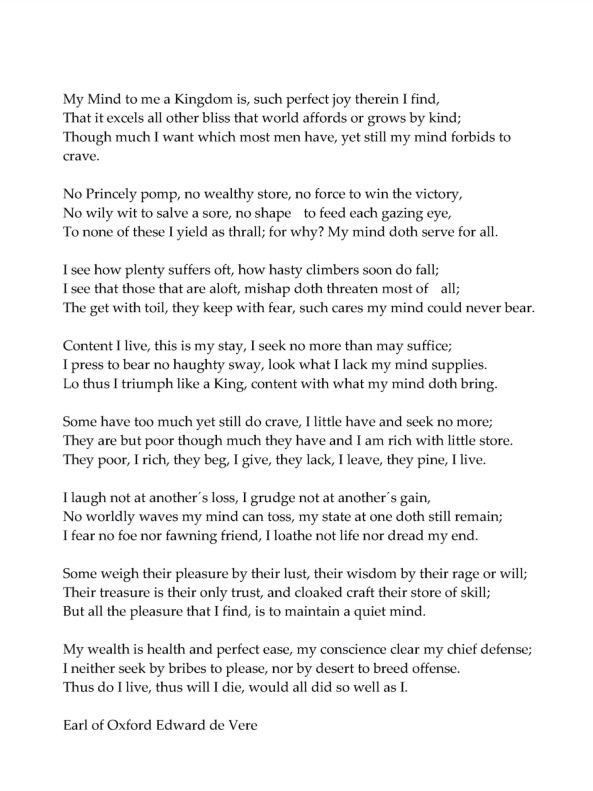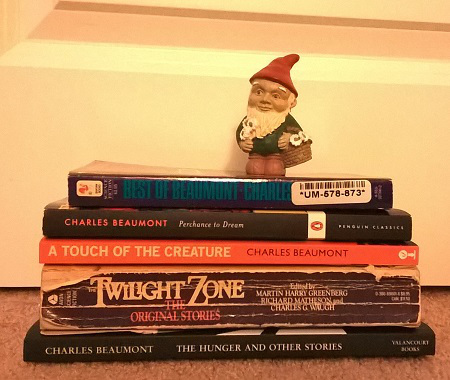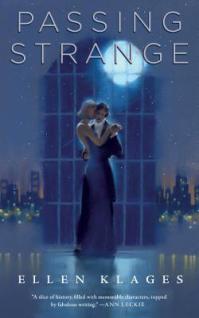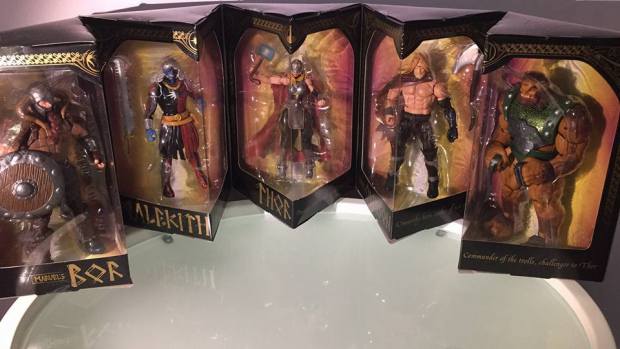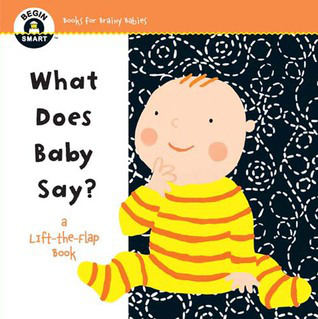
Begin Smart TM: What Does Baby Say? Sterling, 2016. Intended audience: Ages 9 months-2.
An action prompts the question, “What does baby say?” A lifted flap reveals the one word answer. It’s a sturdy-seeming book, and reviews corroborate my guess. The colors are bright. The pictures are simple. This book was originally published in 2008, and I’ve seen complaints about a baby in that book drinking juice from a bottle, which reviewers seem to find confusing and some claim is dangerous. “Juice” was my first word, so I wonder if the writer had such an experience in mind. The version of the book that I read, put out by Sterling in April 2016, has revised the text to say milk instead of juice. Babies of color were included in the illustrations.
***
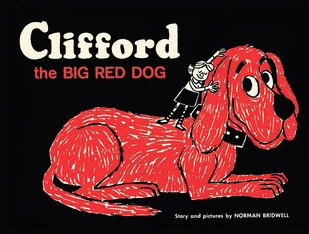
Clifford the Big Red Dog: Vintage Hardcover Edition by Norman Bridwell. Scholastic, 2016. First published 1963. Intended audience: Ages 3-5, Grades PreK-K.
This vintage edition of the book uses only a few colors: black, red, pink, and the off-white of the pages themselves. In many ways, Clifford is an average dog: He plays fetch. He chases cats and cars. He likes shoes. He eats and drinks a lot. But Clifford’s problems are unique because of his size. Emily Elizabeth can’t take him to the zoo anymore because he chases the lions. Sometimes he catches a car and brings it back to her. He mistakes the policeman’s baton for the stick Emily Elizabeth throws and brings the policeman to her. His bathtub is a pool and his brush is a rake. Clifford’s size may be problematic, but Emily Elizabeth would never trade him for any dog.
***
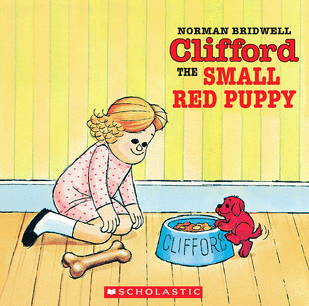
Clifford the Small Red Puppy by Norman Bridwell. Cartwheel-Scholastic, 1985. First published 1972. Intended audience: Ages 4-6, Grades PreK-1.
Clifford began as the tiniest of puppies, a puppy as small as our four-six week old kitten—or smaller. Love and the prayer of a little girl make him grow larger than the largest dog in two days. I love the sass of Emily Elizabeth at the end: “Tell me again how you got your dog.”
I have vague memories of enjoying the books about Clifford the puppy more than the books about Clifford the dog but only I think at the time because he was a puppy and cuter by default. Plus, he was small like me.
Reading this and the original Clifford story back-to-back, I realize that there is much more story and much more personality here than there was in that first book. Whether that’s true of all of the books in the puppy series, I don’t now feel qualified to say.
****
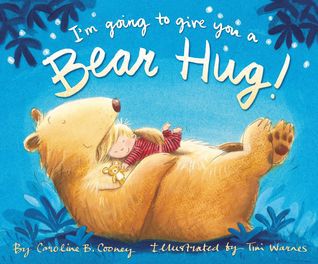
I’m Going to Give You a Bear Hug! by Caroline B. Cooney and illustrated by Tim Warnes. Zonderkidz-Zondervan, 2016.
I am very pleased with this book. It is sweet without being cloying and poetic, creative, and clever without indulging in florid vocabulary. In the rhyming text, the narrator (or mother) insists that she is going to give the listener (or child) the hug of an animal and then describes the hug using phrases that are associated with that animal, making the incomprehensible hug suddenly vivid: example: “I’m going to give you a dog hug. A knock over chairs, Chase up the stairs, And sleep like a log hug.” The illustrations are fairly simple, but small details enliven the story. Each animal sports in some small way the yellow, red polka-dotted pattern of the mother’s dress. (I say mother, but it could be any older woman.) The child’s teddy bear is also in each illustration, alive and independently active.
****
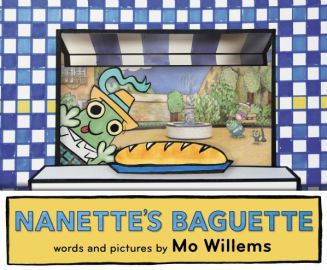
Nanette’s Baguette by Mo Willems. Hyperion-Disney, 2016. Intended audience: Ages 3-5.
Willems loses points here for portraying as frogs his characters with French names on a quest for a baguette. That was unnecessary and not very nice, Mo. This book could otherwise have been perhaps a five-star book for me. I enjoyed the story of the young girl given a responsibility by her mother, but falling into temptation, fearing her mother’s wrath, that fear proving unfounded because her mother is understanding, and then her mother falling into the same temptation when she goes with the girl to complete the task. I like the tongue-twister nature of the text, which got kids and parents laughing. I liked the bright colors and creative layout.
****
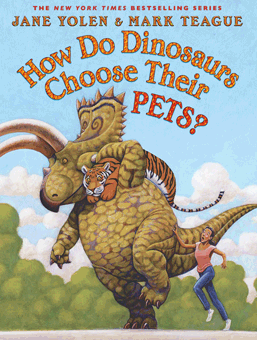
How Do Dinosaurs Choose Their Pets? by Jane Yolen and illustrated by Mark Teague. Blue Sky-Scholastic, 2016. Intended audience: Ages 3-5, Grades PreK-K.
As always, I love that this team always includes male and female dinosaurs without attributing male and female characteristics to the dinosaurs and also always appreciate the inclusion of people of color. This is a fun animal primer too. The beginning of the book questions whether a dinosaur goes and picks out outlandish pets—tigers, elephants, dragons, sharks—but concludes that the dinosaur of course chooses something small and harmless and tractable from a shelter, store, or farm—a dog, kitten, bunny, hamster…. This would be a fun book to share for sure when a family is trying to decide whom or what to adopt. Pair this with Seuss’ What Pet Should I Get? The two are similar enough, but one includes dinosaurs, and one focuses on the difficulty of the decision. Both celebrate the wealth of good choices to be made. Teague’s illustrations are more colorful for sure, and more detailed.
***
These reviews are not endorsed by any of the authors or publishers or anyone else involved in the making of these books. They are independent, honest reviews by a reader.
Save
Advertisements Share this: